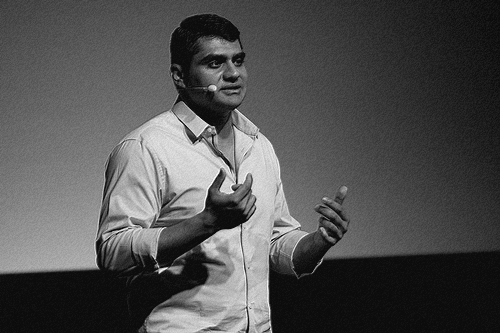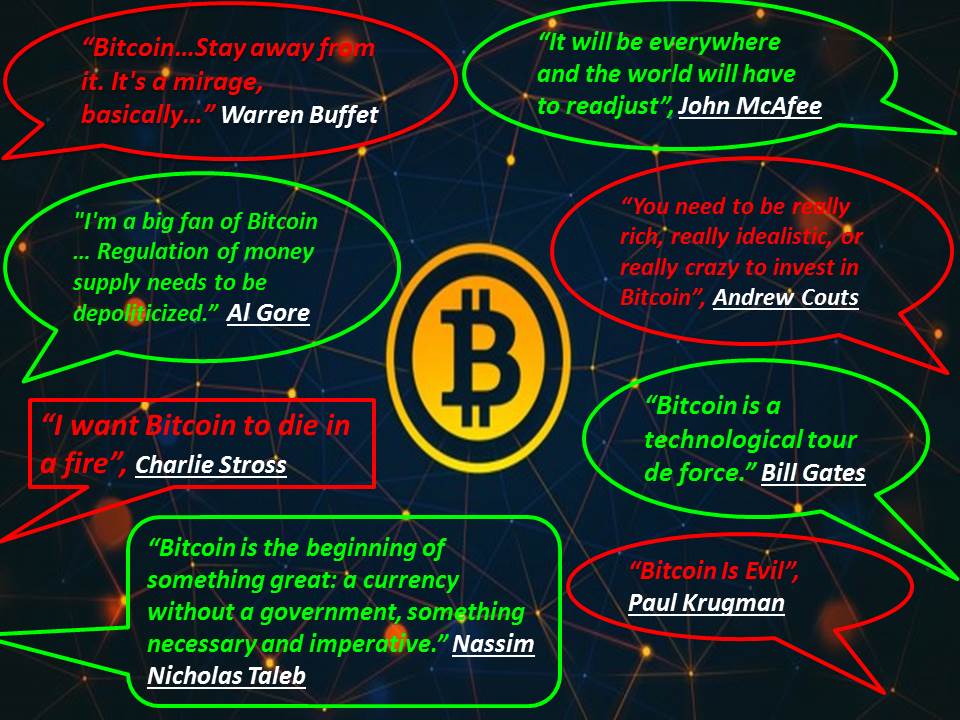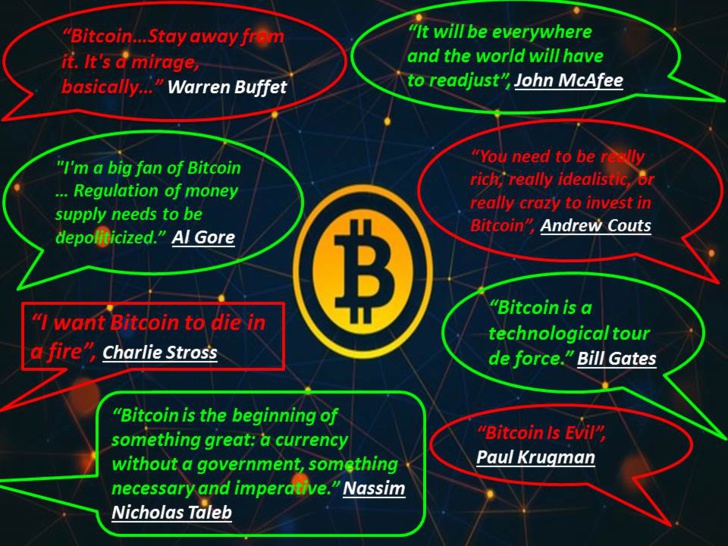Elements of Protocol Commonality: TCP/IP and the Block Chain
In December 1974, Vint Cerf and Robert Kahn designed something revolutionary: the TCP/IP Internet network protocol.
A protocol is like manners. When we say “Thank you’ to someone, the normal response we expect to hear is “You’re welcome.” There is no actual rule that states that someone has to do this. But it remains a formal protocol of communication that is commonly followed.
In a similar way, TCP/IP was first developed as a way for any computer to connect and communicate with the ARPANET. Since then, the project mutated exponentially to allow any computer to communicate with any other computer, finally metamorphosing today into the Internet of Everything.
But the base technologies have remained unchanged. The IP address like 192.168.1.1 still acts like a unique postal address that enables any phone, tablet or computer to identify itself on the internet, while the TCP technology guarantees delivery of the data packets by dividing them into segments. TCP and IP are used in conjunction to increase the probability of the data packet to get from origin to destination.
In December 1974, Vint Cerf and Robert Kahn designed something revolutionary: the TCP/IP Internet network protocol.
A protocol is like manners. When we say “Thank you’ to someone, the normal response we expect to hear is “You’re welcome.” There is no actual rule that states that someone has to do this. But it remains a formal protocol of communication that is commonly followed.
In a similar way, TCP/IP was first developed as a way for any computer to connect and communicate with the ARPANET. Since then, the project mutated exponentially to allow any computer to communicate with any other computer, finally metamorphosing today into the Internet of Everything.
But the base technologies have remained unchanged. The IP address like 192.168.1.1 still acts like a unique postal address that enables any phone, tablet or computer to identify itself on the internet, while the TCP technology guarantees delivery of the data packets by dividing them into segments. TCP and IP are used in conjunction to increase the probability of the data packet to get from origin to destination.
Leveraging on this mode of functioning, Tim Berners-Lee created the Hyper Text Transfer Protocol or HTTP, which became a way for Web browsers to communicate with Web Servers. Today, along with HTTP, a whole suite of protocols like DNS and ARP, work together to provide us with the network experience we are used to. Email, Search Engines, Web pages, API’s and other Internet Services (SaaS, PaaS, IaaS) are all products that have evolved on this framework giving us today’s digital economy.
Just as the TCP/IP-based internet led to a revolution in the way businesses functioned, the Block Chain protocol is repeating the same process all over again. Pundits even go so far as to say it is like watching the birth of the internet all over again.
So how does this all work? A Bitcoin network is a decentralized network. Hence, every time a transaction occurs between the members of this network, it needs to be verified and validated so as to ensure that every transaction occurring within the network is between two individual accounts and that there is no risk of double spending.
b[[ Also on Insights: What Does the Future Hold for Bitcoin? | An Introduction to the Bitcoin Blockchain ]]b
This process of verification is carried out by some members of the network called miners. The miners use specialized and easily available software along with the processing power of their computers to verify the transactions. This sounds simple enough, but the processing power required to do so is quite herculean. And since the miners are using their bandwidth and electricity to do the verification process, they need to be compensated.
This is where the Block Chain begin to take shape. Every few minutes a ‘block’ of all the transactions occurring over the Bitcoin network is created by a miner. Essentially the miner has created a verified transaction file which holds a copied record of all the transactions that have occurred in the network over the past 10 minutes. The word to highlight here is verified. The miner uses the computational power of his computer to assure all members of the network that each transaction is between 2 parties only and that there is no problem of double spending.
For his efforts, the miner is compensated in Bitcoins. This is where the math’s of the currency and the way that it differs from the normal fractional banking system kicks in. The total amount of Bitcoins that can ever exist is fixed at 21 million. As the quantity of money is fixed, the payment made to the miner is much like mining currency out of a reservoir.
As each transaction in every block is made at a specific time, each block is linked to the previous block of transactions. By grouping these blocks we get what is referred to as the Block Chain. And since this grouping of blocks occurs as per the protocol dictated by the algorithm underpinning the creation of Bitcoins, this protocol is defined as the Block Chain protocol.
This is where the TCP/IP and Block Chain protocols differ: TCP/IP is a COMMUNICATIONS protocol, whilst the Block Chain is a VALUE-EXCHANGE protocol.
Bitcoin, Altcoin, Dodgecoin… Who Cares? Only the Block Chain Matters
Since Satoshi’s White paper came online, other cryptocurrenies have proliferated the market. But irrespective of the currency and the frequently debated deflation issues, the underlying Block Chain protocol and the distributed computing architecture used to achieve its value remain the same.
Just as the open communications protocol created profitable business services by catapulting innovation, the Block-chain protocol offers a similar foundation on which businesses can create value-added chains. Using the integrity lattice of the transactions, a whole suite of value trading innovations are beginning to enter the market.
Micropayments
The payments systems used today were designed in the 1950’s and there’s a fixed minimum cost for every transaction. As a result sending small payments of say, $5, is not feasible using this system. (Although companies like DWOLLA have begun offering such services). The reason this hasn’t changed is quite simple; Remittances in 2013 were made at an average rate of 8.9% resulting in $48 billion in revenue. That’s a tidy revenue stream.
Just as TCP/IP allowed information to be transmitted instantly, today, the Block Chain Protocol allows the instant transfer of value irrespective of size. One company that is making use of this concept is ChangeCoin.
ChangeCoin offers a micropayment Infrastructure for the Web. Say you read an article on a popular website, but the freemium version only lets you read quarter of the article and requires a minimum subscription to access the entire article. With micropayments, the user can now pay just a few cents to read the entire article without engaging in an à la carte form of subscription. A good way forward based on this concept would be to cable TV subscriptions, where consumers can pay for the 4 or 5 channels that they regularly watch rather than paying for a suite of 200. Another application is for WiFi hotspots where users pay exactly their data consumption. A user could pre-allocate a connectivity budget and micropayment software could take care of paying for the data connection with no user intervention.
ChangeCoin has also created a boon for content creators and bloggers in the form of ChangeTip. Consumers can now use Bitcoin to tip a content creator with a small sum (even 5 cents) instead of just liking an article. Not only is this an innovative way to show appreciation but it will change the business model of content creation and curation.
Block Chain APIs
Companies such as CHAIN, now allow developers to build API’s on the Block Chain Protocol such as:
- API’s to allocate digital resources such as energy, bandwidth, storage, and computation to the connected devices / services that need them.Eg; FileCoin
- API’s for Oculus Rift- With access to the virtual world now becoming TROM-esque, developers are looking at creating API’s that can be used in the virtual space to make transactions, blurring the lines between virtual and real economies.
- Micropayment API’s tailored to the type of transaction being undertaken. i.e: Tipping a blog versus Tipping a car share driver. Very useful in a shared economy where consumers increasingly become prosumers.
Smart Contracts and Programmable Money
This relatively new concept involves the development of programs that can be entrusted with money. Smart contracts are programs that encode certain conditions and outcomes. When a transaction between 2 parties occurs, the program can verify if the product/service has been sent by the supplier. Only after verification is the sum transmitted to the suppliers account. By developing ready to use programs that function on predetermined conditions between the supplier and the client, smart programs ensure a secure escrow service in real time at near zero marginal cost. One company that is making dramatic foray here is Codius which offers an ecosystem for Smart Contracts.
Apart from Financial transactions, smart contracts are now entering the Legal System. Companies like Empowered Law use the public distributed ledger of transactions that makes up the Block Chain to provide Multi-Signature account services for asset protection, estate planning, dispute resolution, leasing and corporate governance. A prime example of this transition is seen ins a procedure referred to as ‘Coloring’ a Coin, in which a house can be sold in the form of a Bitcoin payment with the same ease and speed.
Digital Assets and Smart Property
Building up on colored coins, digital assets are assets whose ownership is recorded digitally. Bitcoins are of digital assets, but since the Block Chain is a decentralized asset registry, it can also be used to register ownership and transfer of any digital asset besides bitcoins. In this way, a digital bond could pay coupons and redeem the principal to the address holding the digital bond, without the need of custodians.
Taking this concept one step further is in the form of Smart Properties. A Smart Property is a property that has access to the Block Chain, and can take actions based on the information published there. Another way to look at it is that smart property can be controlled via the Block Chain. Eg: A car whose ownership is represented by a digital asset in the Block Chain. The physical car is connected to the internet and can read the Block Chain. Therefore it can keep track of the status of the digital asset representing it. As the digital asset is transferred from one address to another, the physical car can see this status update in the Block Chain and take necessary actions, i.e. change its owner… It’s a way of Automating the Internet of Everything.
What to Keep Your Eyes Peeled For in 2015
Ethereum and the MIST browser – Ethereum intends to bring together both a crypto ledger and a Turing-complete programming language, which is a language can be used to simulate any other computer language (not just its own). They intend to make a browser that is a Swiss-army knife of Block Chain and encryption tools that allow non-technical users to truly leverage the web.
Parallel block chains and side chains – Some developers have begun looking at the creation of different Block Chains as they do not believe on depending on a single Block Chain. Parallel Block Chains and Side Chains allow for tradeoffs and improved scalability using alternative, completely independent Block Chains thus allowing for more innovation.
The Philippines intends to put its Peso put on the block chain – Just as Africa leapfrogged wired telecommunications and skipped right to wireless, the Philippines intends to improve its financial services by integrating the Peso to the Block Chain. A dramatic initiative.
In Dec 2014, Don Tapscott, a leading authority on technology and innovation as well as a LinkedIn Influencer, did something characteristic of great men. He admitted he was wrong, noting: “Bitcoin… I used to think it would never fly. Now I think not only will it fly as a currency, but the underlying Block Chain technology of crypto currencies is a core part of the next generation of the internet that is radically going to transform not just commerce and the nature of the corporation, but many of our institutions in society and everyone needs to pay attention to this.”
For those who remain apprehensive, this could be partly due to my poor scribbling’s. But could it also be our innate resistance to change? After all, to quote Thomas R. Lounsbury: “We must view with profound respect the infinite capacity of the human mind to resist the introduction of useful knowledge.”
Kariappa Bheemaiah is a Quantitative Research Analyst at Grenoble Ecole de Management.
Just as the TCP/IP-based internet led to a revolution in the way businesses functioned, the Block Chain protocol is repeating the same process all over again. Pundits even go so far as to say it is like watching the birth of the internet all over again.
So how does this all work? A Bitcoin network is a decentralized network. Hence, every time a transaction occurs between the members of this network, it needs to be verified and validated so as to ensure that every transaction occurring within the network is between two individual accounts and that there is no risk of double spending.
b[[ Also on Insights: What Does the Future Hold for Bitcoin? | An Introduction to the Bitcoin Blockchain ]]b
This process of verification is carried out by some members of the network called miners. The miners use specialized and easily available software along with the processing power of their computers to verify the transactions. This sounds simple enough, but the processing power required to do so is quite herculean. And since the miners are using their bandwidth and electricity to do the verification process, they need to be compensated.
This is where the Block Chain begin to take shape. Every few minutes a ‘block’ of all the transactions occurring over the Bitcoin network is created by a miner. Essentially the miner has created a verified transaction file which holds a copied record of all the transactions that have occurred in the network over the past 10 minutes. The word to highlight here is verified. The miner uses the computational power of his computer to assure all members of the network that each transaction is between 2 parties only and that there is no problem of double spending.
For his efforts, the miner is compensated in Bitcoins. This is where the math’s of the currency and the way that it differs from the normal fractional banking system kicks in. The total amount of Bitcoins that can ever exist is fixed at 21 million. As the quantity of money is fixed, the payment made to the miner is much like mining currency out of a reservoir.
As each transaction in every block is made at a specific time, each block is linked to the previous block of transactions. By grouping these blocks we get what is referred to as the Block Chain. And since this grouping of blocks occurs as per the protocol dictated by the algorithm underpinning the creation of Bitcoins, this protocol is defined as the Block Chain protocol.
This is where the TCP/IP and Block Chain protocols differ: TCP/IP is a COMMUNICATIONS protocol, whilst the Block Chain is a VALUE-EXCHANGE protocol.
Bitcoin, Altcoin, Dodgecoin… Who Cares? Only the Block Chain Matters
Since Satoshi’s White paper came online, other cryptocurrenies have proliferated the market. But irrespective of the currency and the frequently debated deflation issues, the underlying Block Chain protocol and the distributed computing architecture used to achieve its value remain the same.
Just as the open communications protocol created profitable business services by catapulting innovation, the Block-chain protocol offers a similar foundation on which businesses can create value-added chains. Using the integrity lattice of the transactions, a whole suite of value trading innovations are beginning to enter the market.
Micropayments
The payments systems used today were designed in the 1950’s and there’s a fixed minimum cost for every transaction. As a result sending small payments of say, $5, is not feasible using this system. (Although companies like DWOLLA have begun offering such services). The reason this hasn’t changed is quite simple; Remittances in 2013 were made at an average rate of 8.9% resulting in $48 billion in revenue. That’s a tidy revenue stream.
Just as TCP/IP allowed information to be transmitted instantly, today, the Block Chain Protocol allows the instant transfer of value irrespective of size. One company that is making use of this concept is ChangeCoin.
ChangeCoin offers a micropayment Infrastructure for the Web. Say you read an article on a popular website, but the freemium version only lets you read quarter of the article and requires a minimum subscription to access the entire article. With micropayments, the user can now pay just a few cents to read the entire article without engaging in an à la carte form of subscription. A good way forward based on this concept would be to cable TV subscriptions, where consumers can pay for the 4 or 5 channels that they regularly watch rather than paying for a suite of 200. Another application is for WiFi hotspots where users pay exactly their data consumption. A user could pre-allocate a connectivity budget and micropayment software could take care of paying for the data connection with no user intervention.
ChangeCoin has also created a boon for content creators and bloggers in the form of ChangeTip. Consumers can now use Bitcoin to tip a content creator with a small sum (even 5 cents) instead of just liking an article. Not only is this an innovative way to show appreciation but it will change the business model of content creation and curation.
Block Chain APIs
Companies such as CHAIN, now allow developers to build API’s on the Block Chain Protocol such as:
- API’s to allocate digital resources such as energy, bandwidth, storage, and computation to the connected devices / services that need them.Eg; FileCoin
- API’s for Oculus Rift- With access to the virtual world now becoming TROM-esque, developers are looking at creating API’s that can be used in the virtual space to make transactions, blurring the lines between virtual and real economies.
- Micropayment API’s tailored to the type of transaction being undertaken. i.e: Tipping a blog versus Tipping a car share driver. Very useful in a shared economy where consumers increasingly become prosumers.
Smart Contracts and Programmable Money
This relatively new concept involves the development of programs that can be entrusted with money. Smart contracts are programs that encode certain conditions and outcomes. When a transaction between 2 parties occurs, the program can verify if the product/service has been sent by the supplier. Only after verification is the sum transmitted to the suppliers account. By developing ready to use programs that function on predetermined conditions between the supplier and the client, smart programs ensure a secure escrow service in real time at near zero marginal cost. One company that is making dramatic foray here is Codius which offers an ecosystem for Smart Contracts.
Apart from Financial transactions, smart contracts are now entering the Legal System. Companies like Empowered Law use the public distributed ledger of transactions that makes up the Block Chain to provide Multi-Signature account services for asset protection, estate planning, dispute resolution, leasing and corporate governance. A prime example of this transition is seen ins a procedure referred to as ‘Coloring’ a Coin, in which a house can be sold in the form of a Bitcoin payment with the same ease and speed.
Digital Assets and Smart Property
Building up on colored coins, digital assets are assets whose ownership is recorded digitally. Bitcoins are of digital assets, but since the Block Chain is a decentralized asset registry, it can also be used to register ownership and transfer of any digital asset besides bitcoins. In this way, a digital bond could pay coupons and redeem the principal to the address holding the digital bond, without the need of custodians.
Taking this concept one step further is in the form of Smart Properties. A Smart Property is a property that has access to the Block Chain, and can take actions based on the information published there. Another way to look at it is that smart property can be controlled via the Block Chain. Eg: A car whose ownership is represented by a digital asset in the Block Chain. The physical car is connected to the internet and can read the Block Chain. Therefore it can keep track of the status of the digital asset representing it. As the digital asset is transferred from one address to another, the physical car can see this status update in the Block Chain and take necessary actions, i.e. change its owner… It’s a way of Automating the Internet of Everything.
What to Keep Your Eyes Peeled For in 2015
Ethereum and the MIST browser – Ethereum intends to bring together both a crypto ledger and a Turing-complete programming language, which is a language can be used to simulate any other computer language (not just its own). They intend to make a browser that is a Swiss-army knife of Block Chain and encryption tools that allow non-technical users to truly leverage the web.
Parallel block chains and side chains – Some developers have begun looking at the creation of different Block Chains as they do not believe on depending on a single Block Chain. Parallel Block Chains and Side Chains allow for tradeoffs and improved scalability using alternative, completely independent Block Chains thus allowing for more innovation.
The Philippines intends to put its Peso put on the block chain – Just as Africa leapfrogged wired telecommunications and skipped right to wireless, the Philippines intends to improve its financial services by integrating the Peso to the Block Chain. A dramatic initiative.
In Dec 2014, Don Tapscott, a leading authority on technology and innovation as well as a LinkedIn Influencer, did something characteristic of great men. He admitted he was wrong, noting: “Bitcoin… I used to think it would never fly. Now I think not only will it fly as a currency, but the underlying Block Chain technology of crypto currencies is a core part of the next generation of the internet that is radically going to transform not just commerce and the nature of the corporation, but many of our institutions in society and everyone needs to pay attention to this.”
For those who remain apprehensive, this could be partly due to my poor scribbling’s. But could it also be our innate resistance to change? After all, to quote Thomas R. Lounsbury: “We must view with profound respect the infinite capacity of the human mind to resist the introduction of useful knowledge.”
Kariappa Bheemaiah is a Quantitative Research Analyst at Grenoble Ecole de Management.
Autres articles
-
Pomelo annonce une Série A à 35 millions de dollars menée par Vy Capital
-
Hong Kong : bientôt des premiers ETF Bitcoin ?
-
TMS Network (TMSN) Powers Up As Cryptocurrency Domain Appears Unstoppable. What Does This Mean For Dogecoin (DOGE) and Solana (SOL)?
-
The Growing Popularity of Crypto Payments: Could TMS Network (TMSN), Alchemy Pay (ACH), and Ripple (XRP) Lead The Way Despite The Whales?
-
DigiFT DEX Raises $10.5M in Pre-Series A Funding Led by Shanda Group


















